FLG
-
Official Full Name
filaggrin -
Overview
The protein encoded by this gene is an intermediate filament-associated protein that aggregates keratin intermediate filaments in mammalian epidermis. It is initially synthesized as a polyprotein precursor, profilaggrin (consisting of multiple filaggrin units of 324 aa each), which is localized in keratohyalin granules, and is subsequently proteolytically processed into individual functional filaggrin molecules. Mutations in this gene are associated with ichthyosis vulgaris. -
Synonyms
FLG;filaggrin;epidermal filaggrin;ATOD2
Recombinant Proteins
- Human
- Mouse
- E.coli
- Yeast
- Insect Cells
- His
- Non
- GST
- SUMO
| Cat.# | Product name | Source (Host) | Species | Tag | Protein Length | Price |
|---|---|---|---|---|---|---|
| FLG-1229H | Recombinant Human FLG protein, His-tagged | E.coli | Human | His | Ser3905~Tyr4031 | |
| FLG-1220H | Recombinant Human Filaggrin | E.coli | Human | Non |
|
|
| FLG-1221H | Recombinant Human FLG, GST-tagged | E.coli | Human | GST | 3838-4062 a.a. |
|
| FLG-1367H | Recombinant Human Filaggrin, GST-tagged | E.coli | Human | GST |
|
|
| FLG-1230H | Recombinant Human FLG protein, His-tagged | Yeast | Human | His | 3838-4061aa |
|
| FLG-1503H | Recombinant Human FLG Protein, His&GST-tagged | E.coli | Human | GST&His | Arg3049-Ala3361 |
|
| Flg-1625M | Recombinant Mouse Flg protein, His & GST-tagged | E.coli | Mouse | GST&His | Asp119~Tyr336 |
|
| FLG-2217H | Recombinant Human FLG protein, His-tagged | Insect Cells | Human | His | 3838-4061aa |
|
| FLG-2692H | Recombinant Human FLG protein(2441-2620 aa), C-His-tagged | E.coli | Human | His | 2441-2620 aa |
|
| FLG-2922H | Recombinant Human FLG protein, His-SUMO-tagged | E.coli | Human | His&SUMO | 3838-4061aa |
|
| FLG-3029H | Recombinant Human FLG Protein (Ser468-Ser792), C-His tagged | E.coli | Human | His | Ser468-Ser792 |
|
| FLG-3360M | Recombinant Mouse FLG protein, His-GST-tagged | E.coli | Mouse | GST&His | Tyr153~Ala308 |
|
| FLG-3361M | Recombinant Mouse FLG protein, His-tagged | E.coli | Mouse | His | Tyr153~Ala308 |
|
| FLG-4554H | Recombinant Human FLG protein, His-tagged | E.coli | Human | His |
|
|
| FLG-5744H | Recombinant Human FLG protein, GST-tagged | E.coli | Human | GST |
|
Background
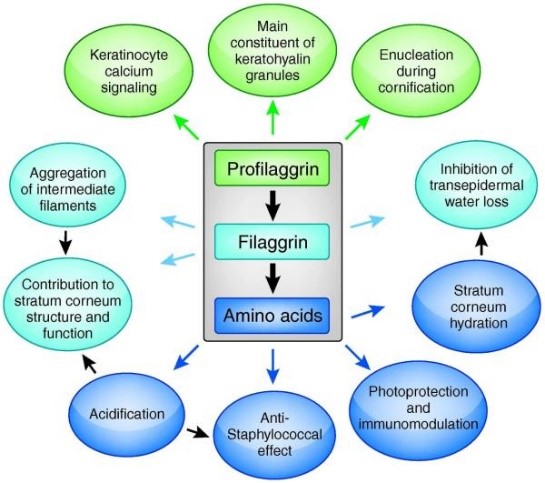
Fig1. Profilaggrin, filaggrin and their constituent amino acids are multifunctional proteins contributing to the formation and function of the skin barrier Diagram summarizing the known and possible functions of profilaggrin, filaggrin and amino acids released by filaggrin proteolysis. (Sara J Brown, 2012)
What is FLG protein?
FLG (filaggrin) gene is a protein coding gene which situated on the long arm of chromosome 1 at locus 1q21. The protein encoded by this gene is an intermediate filament-associated protein that aggregates keratin intermediate filaments in mammalian epidermis. It is initially synthesized as a polyprotein precursor, profilaggrin, which is localized in keratohyalin granules, and is subsequently proteolytically processed into individual functional filaggrin molecules. The FLG protein is consisted of 4061 amino acids and its molecular mass is approximately 435.2 kDa.
What is the function of FLG protein?
FLG is an important epidermal protein that is mainly found in the stratum corneum of the skin. Its main function is to maintain the skin's barrier function and moisturize. Specifically, FLG proteins polymerize to form a sturdy network of proteins that help maintain the structural integrity of keratinocytes and prevent excessive evaporation of water, thereby keeping the skin moist. In addition, FLG is involved in regulating the acid-base balance and antimicrobial defense of the skin.
FLG Related Signaling Pathway
FLG is mainly involved in the signaling pathway of skin barrier function maintenance. During keratinocyte differentiation, FLG is degraded into multiple small peptides that help keratinocytes aggregate and moisturize, maintaining the barrier integrity of the skin. FLG degradation products are also involved in regulating skin pH and have antibacterial effects, enhancing the skin's ability to fight against external stimuli and microorganisms.
FLG Related Diseases
Defective FLG proteins, or genetic mutations, are strongly associated with a variety of skin diseases, most typically atopic dermatitis (also known as eczema). In addition, FLG deficiency is associated with a number of other skin diseases, including psoriasis, contact dermatitis, and some forms of asthma and allergic rhinitis, as these diseases are often associated with impairment of skin barrier function. FLG gene variants may also be associated with an increased risk of skin infections, as damage to the skin barrier reduces its ability to fight off outside microbes.
Bioapplications of FLG
In the field of cosmetics, based on the role of FLG protein in moisturizing and skin barrier, some skin care products are also designed to increase the level of FLG in the skin and enhance the protective function of the skin. In terms of disease treatment, therapeutics can be developed to directly supplement or repair the function of filaggrin protein, or to strengthen the skin barrier through other mechanisms.
Case Study
Case study 1: Hae Ran Lee, 2024
New supplements with preventive effects against skin photodamage are receiving increasing attention. This study evaluated the anti-photoaging effects of salmon nasal cartilage proteoglycan (SPG), acting as a functional material for skin health. We administered SPG to in vitro and in vivo models exposed to ultraviolet B (UVB) radiation and assessed its moisturizing and anti-wrinkle effects on dorsal mouse skin and keratinocytes and dermal fibroblasts cell lines. These results showed that SPG restored the levels of filaggrin, involucrin, and AQP3 in the epidermis of UVB-irradiated dorsal skin and keratinocytes, thereby enhancing the keratinization process and water flow. Additionally, SPG treatment increased the levels of hyaluronan and skin ceramide, the major components of intercellular lipids in the epidermis. Furthermore, SPG treatment significantly increased the levels of collagen and procollagen type 1 by down-regulating matrix metalloproteinase 1. In addition, SPG strongly inhibited mitogen-activated protein kinase (MAPKs) signaling, the including extracellular signal-regulated kinase, c-Jun N-terminal kinase (JNK), and p38.
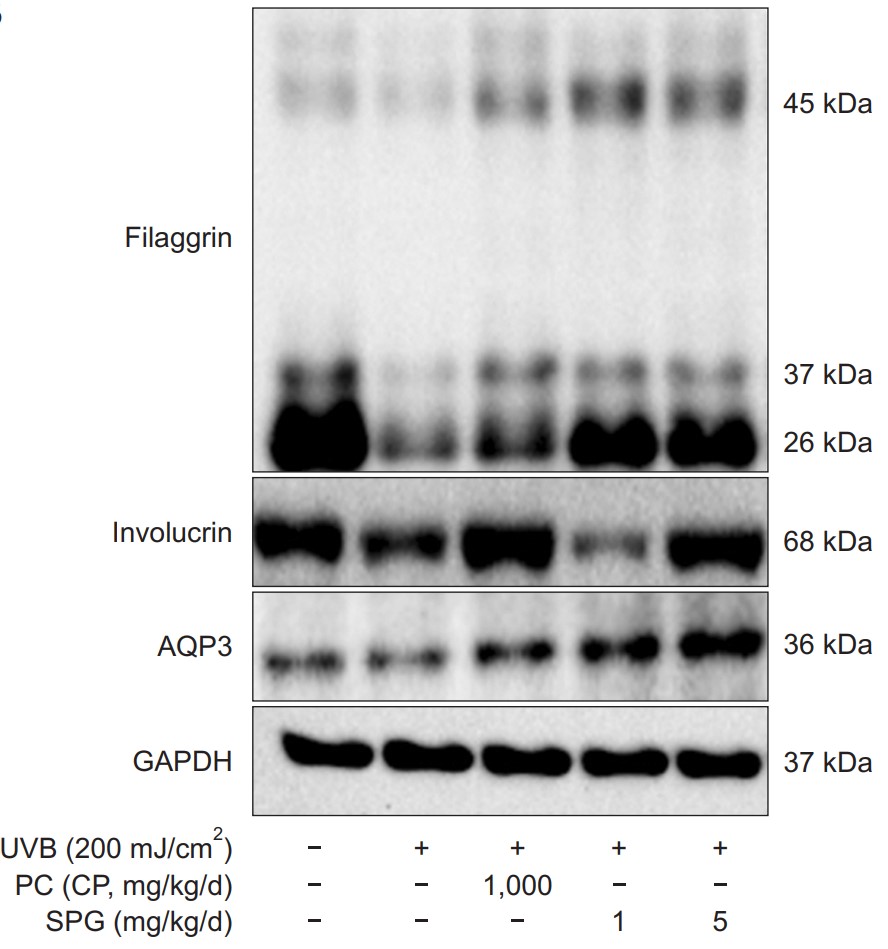
Fig1. Western blot was used to measure the expression levels of filaggrin, involucrin, and AQP3 in skin of SKH-1 mice exposed to UVB irradiation for eight weeks.
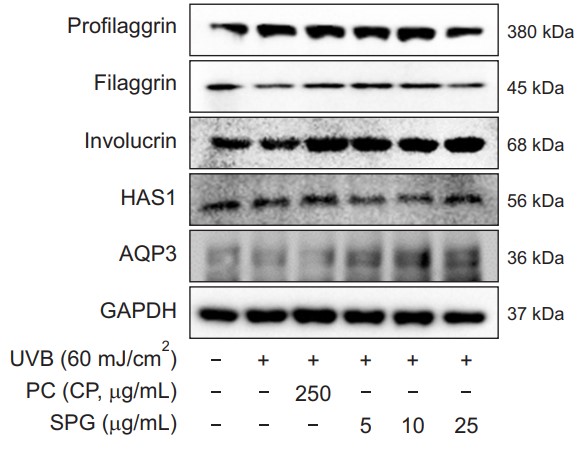
Case study 2: Rosanna Marsella, 2024
Filaggrin is important for the skin barrier and atopic dermatitis. Another filaggrin-like protein, filaggrin 2, has been described. We evaluated antibodies against both filaggrins in normal and atopic skin biopsies from dogs before and after allergen challenges (D0, D1, D3 and D10). Filaggrins expression was evaluated by immunohistochemistry and Western blot. The researchers used PCR to investigate changes in filaggrin gene expression. Effects of group (p = 0.0134) and time (p = 0.0422) were shown for the intensity of filaggrin staining. Only an effect of group was found for filaggrin 2 (p = 0.0129). Atopic samples had higher intensity of staining than normal dogs [filaggrin on D3 (p = 0.0155) and filaggrin 2 on D3 (p = 0.0038) and D10 (p < 0.0001)]. Atopic samples showed increased epidermal thickness after allergen exposure (D3 vs. D0, p = 0.005), while normal dogs did not. In atopic samples, significant increased gene expression was found for filaggrin overtime but not for filaggrin 2. Western blot showed an increase in filaggrin 2 on D3. A small size band (15 kD) containing a filaggrin sequence was found in Western blots of atopic samples only.
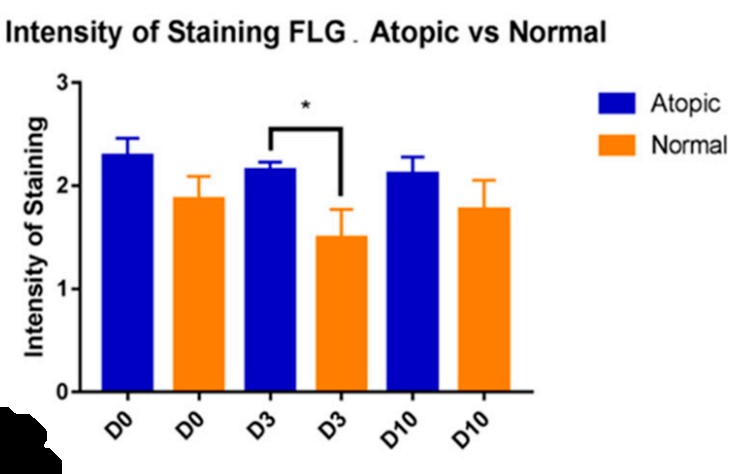
Fig3. Subjective scoring of filaggrin intensity. For filaggrin, on Day 3, atopic samples had higher intensity staining than normal samples (p = 0.0155).
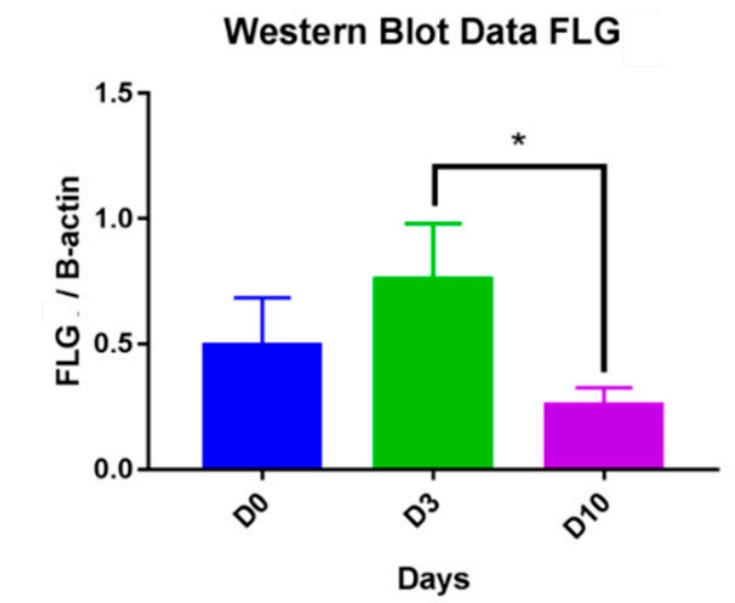
Quality Guarantee
High Purity

Fig1. SDS-PAGE (FLG-1229H) (PROTOCOL for western blot)
.
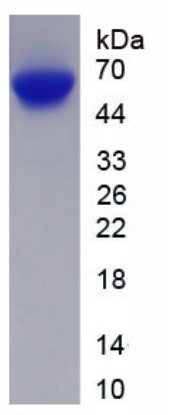
Fig2. SDS-PAGE (FLG-1503H) (PROTOCOL for western blot)
Involved Pathway
FLG involved in several pathways and played different roles in them. We selected most pathways FLG participated on our site, such as AhR pathway, which may be useful for your reference. Also, other proteins which involved in the same pathway with FLG were listed below. Creative BioMart supplied nearly all the proteins listed, you can search them on our site.
| Pathway Name | Pathway Related Protein |
|---|---|
| AhR pathway | CYP1A1,AHR,JUND,CDC37,AHRR,PTGES3,CYP1B1,EGFR,NQO1,CDKN1A |
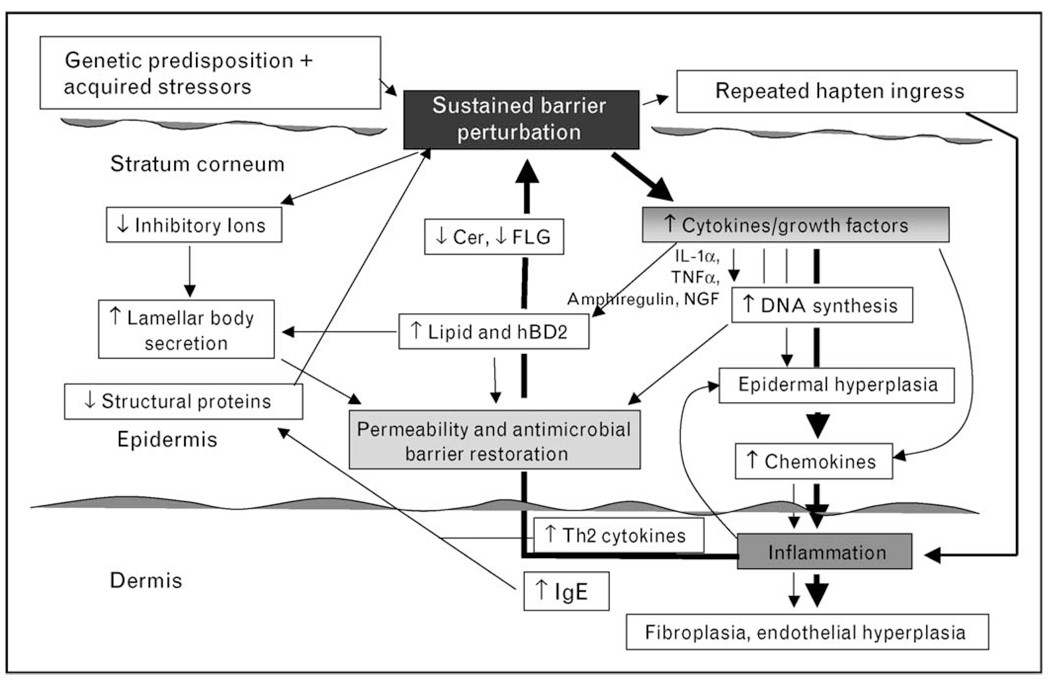
Fig1. Outside-inside' initial provocation of atopic dermatitis eventually leads to 'outside-inside-outside' vicious cycle by multiple mechanisms. (Peter M Elias, 2009)
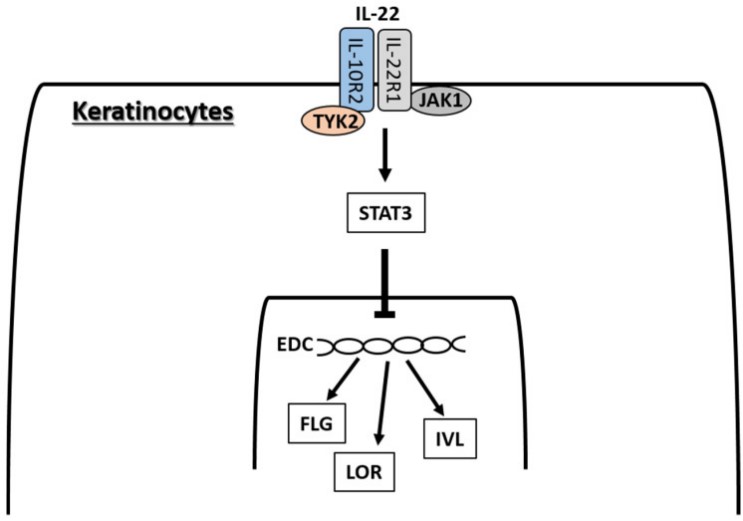
Fig2. IL-22 binds IL-22R1/IL-10R2 complex, activates the JAK1/TYK2-STAT3 pathway and inhibits the expression of FLG, LOR, and IVL. (Masutaka Furue, 2020)
Protein Function
FLG has several biochemical functions, for example, calcium ion binding,protein binding,structural molecule activity. Some of the functions are cooperated with other proteins, some of the functions could acted by FLG itself. We selected most functions FLG had, and list some proteins which have the same functions with FLG. You can find most of the proteins on our site.
| Function | Related Protein |
|---|---|
| calcium ion binding | PCDH1A3,PCDH21,PSPH,LPCAT2,ASPH,NINL,LDLRA,PLSCR4,PLA2G5,S100A10A |
| protein binding | PIM3,GSTO2,CLN3,CCDC86,FAM82A2,MYL12A,ZZZ3,CNOT10,CSF3R,MAGI2 |
| structural molecule activity | MAP7D2A,FGB,KRT75,KRT38,CLDN15LA,KRT85,CLDN6,KRT95,EPB41L2,MAPK8IP2 |
Interacting Protein
FLG has direct interactions with proteins and molecules. Those interactions were detected by several methods such as yeast two hybrid, co-IP, pull-down and so on. We selected proteins and molecules interacted with FLG here. Most of them are supplied by our site. Hope this information will be useful for your research of FLG.
KLK5;ESR2;USP1;VHL;STK4;SLX4;MAP1LC3B
Resources
Related Services
Related Products
References
- Ross, KA; et al. Coherent Somatic Mutation in Autoimmune Disease. PLOS ONE 9:-(2014).
- Son, ED; Kim, HJ; et al. Staphylococcus aureus inhibits terminal differentiation of normal human keratinocytes by stimulating interleukin-6 secretion. JOURNAL OF DERMATOLOGICAL SCIENCE 74:64-71(2014).


